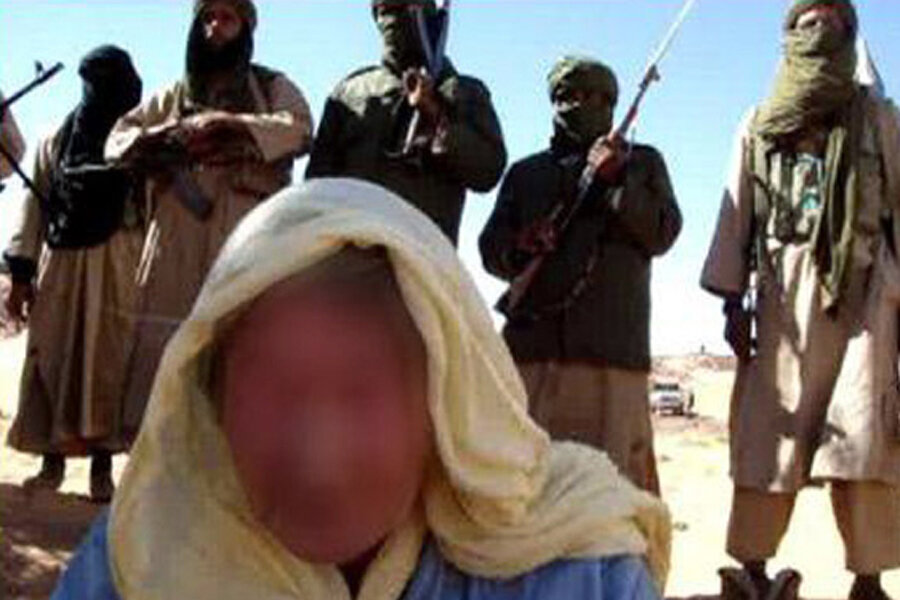Sahelistan loot: Al Qaeda sucks $125 million in ransoms
Loading...
A version of this post appeared on Africa in Transition. The views expressed are the author's own.
Rukmini Callimachi has a chilling story on the front page of today’s New York Times, “Paying Ransoms, Europe Bankrolls Qaeda Terror.”
It is a must-read. The story is based on a wide range of interviews with victims, government officials, counter-terrorism experts, and thousands of pages of internal Al Qaeda documents found in Mali.
Ms. Callimachi reports that according to the Times’ own investigations, Al Qaeda and its affiliates have taken in at least $125 million in revenue from ransoms since 2008. The US Treasury Department estimates the total at $165 million in the same time period.
The story outlines a carefully organized business, centrally directed by Al Qaeda in Pakistan, that outsources the actual kidnappings to local criminal gangs and uses intermediaries for the ransom negotiations; the latter receive 10 percent of the takings.
Ransoms have increased from an average of $200,000 per hostage in 2003 to up to $10 million now. Hostages are so valuable that the Times estimates that only 15 percent have been murdered or died since 2008, some as part of failed rescue attempts.
The story outlines the perpetrator strategies for pressuring European governments to pay.
Apparently, it is a remarkable success. Callimachi reports that since 2008, France has paid $58.1 million; Switzerland, $12.4 million; Spain, $11 million; and Austria, $3.2 million. All have signed agreements to end ransom paying, and all officially deny doing so, but with winks and nods.
Ransom payments appear as “development assistance” line items in national budgets. Citing American and European counter terrorism experts, she reports that Al Qaeda now targets the nationals of rich European countries that will pay. Of the 53 hostages seized by "official" Al Qaeda branches over the past five years, one third were French, while Austria, Spain, and Switzerland together account for 20 percent of victims.
Only three hostages, 5 percent of the total, have been American.
The United Kingdom and the United States do not pay ransoms. Callimachi reports that accordingly, kidnappers have little interest in Americans or Brits. But because this is known, when nationals of those two countries are captured with others from countries that do pay, they are likely to be murdered. The article cites Edwin Dyer, a British man who was killed in 2009, as a tragic example.
This story is focused primarily on the Sahel, especially Mali, Niger, and Algeria, not west Africa. Al Qaeda and Boko Haram are not closely related. It seems to me unlikely that Al Qaeda is orchestrating the wave of kidnapping in northern Nigeria, or the much more lucrative kidnappings in the oil patch or around Lagos. But the Sahelian kidnappings surely inspire Boko Haram, Ansaru, and, no doubt, purely criminal gangs, and inform their tactics.
If the story’s premise is accepted, ransoms are now a major driver of Al Qaeda terrorism. European democracies are unable to resist the popular pressure to pay ransom in order to spare the lives of their citizens.
Under these circumstances, should the European countries, along with the United Kingdom and the United States, ban travel to the region by their nationals?
Attractive though that approach might be, there would likely be significant legal challenges and such a ban would be almost impossible to enforce.





